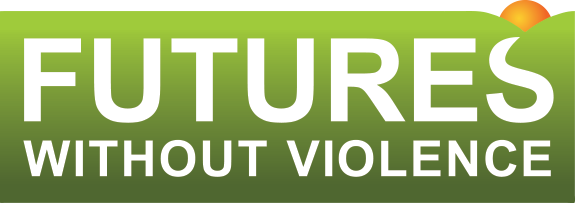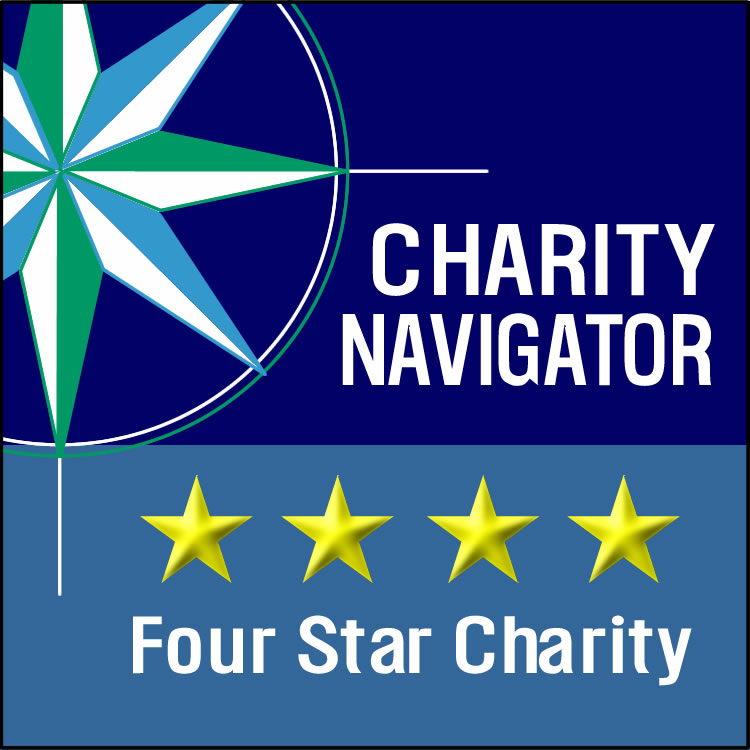100 of Nation’s Top Leaders Convene at Los Angeles Summit
| FOR IMMEDIATE RELEASE | CONTACT |
|---|---|
| May 12, 2014 | Marsha Robertson |
| 415.678.5617 |
Futures Without Violence, one of the nation’s leading organizations working to prevent childhood bullying, trauma, and violence, hosted Somebody Stood Up for Me, an interactive summit that brought together leading experts and innovators in the fields of health, education, juvenile justice and community action.
LOS ANGELES, CA (May 7, 2014) Futures Without Violence, one of the nation’s leading organizations working to prevent childhood bullying, trauma, and violence, hosted Somebody Stood Up for Me, an interactive summit that brought together leading experts and innovators in the fields of health, education, juvenile justice and community action. With two out of three children in the U.S. exposed to, or experiencing violence, leaders from around the country agreed that multiple sectors must work together to identify and scale innovative programs. Dr. Robert K. Ross, CEO of The California Endowment opened the Summit by saying, “Childhood trauma is the number one public health crisis in the country. What comes next is the courage to do things differently.”
On the need for investment in America’s children:
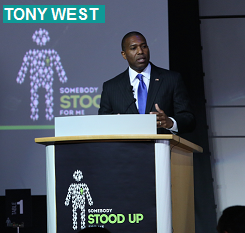 “A society that fails to make investments in its children does so at its own peril,” said keynote speaker Tony West, Associate Attorney General at the U.S. Department of Justice. West acknowledged the sobering data on the effects of violence against children, but also stressed the importance of identifying and investing in evidence-based programs that are already making a real impact around the country. “The violence is not inevitable,” he said.
“A society that fails to make investments in its children does so at its own peril,” said keynote speaker Tony West, Associate Attorney General at the U.S. Department of Justice. West acknowledged the sobering data on the effects of violence against children, but also stressed the importance of identifying and investing in evidence-based programs that are already making a real impact around the country. “The violence is not inevitable,” he said.
“We need a limitless regard and belief in kids,” said Dr. John Deasy, Superintendent of the Los Angeles Unified School District. Speaking of the need to reform the education system to help children experiencing trauma and violence, Dr. Deasy said, “We need to fund youth in peril more than we fund anything else.”
On the dramatic discoveries of brain science:
“We need to take the information out of the [science] journals and put it into practice,” said Dr. Victor Carrion, Professor of Psychiatry and Behavioral Sciences at Stanford University. “The battle between nature and nurture is over. We now know it’s not one or the other, it’s the confluence of both,” he said, stressing the need to create environments for children that are conducive to healing the brain, body, and mind.
A growing body of research indicates that repeated trauma literally blocks children’s bodies and minds from developing in a healthy way. Ultimately, the pervasiveness and severity of childhood trauma impacts all of us by weakening public health, producing poor educational outcomes, harming the economy, and putting a strain on the justice system.
How to model Healing Communities from programs that are getting it right:
“We need to be talking about the ‘how done-its,’” said New York Times journalist David Bornstein, speaking of the media’s role in highlighting innovative programs around the country that are helping children every day.
“L.A. is America only sooner and we are coming to a hometown near you,” said Dr. Deasy, referring to Los Angeles’ diverse population and its response to trauma in the community.
“The science is way ahead of the policy,” said Dr. Robert K. Ross, CEO of The California Endowment. Speaking on a panel with leaders from various sectors, Dr. Ross touched on an important aspect of building healing communities: the importance of promoting programs that reflect the evidence.
Pittsburgh Steeler’s journey from childhood trauma to resilience and success:
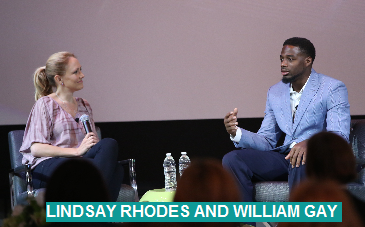 The luncheon keynote featured Pittsburgh Steelers cornerback William Gay, a childhood trauma survivor and advocate for children and survivors of domestic abuse. He spoke about his experience recovering from the trauma of his mother, who was shot and killed by his stepfather. “Talking about it allowed me to get out bottled up feelings. I got on the field to play for something,” he said. “I wanted to beat the statistics,” referring to data that shows children who experience such traumas face major difficulties later in life.
The luncheon keynote featured Pittsburgh Steelers cornerback William Gay, a childhood trauma survivor and advocate for children and survivors of domestic abuse. He spoke about his experience recovering from the trauma of his mother, who was shot and killed by his stepfather. “Talking about it allowed me to get out bottled up feelings. I got on the field to play for something,” he said. “I wanted to beat the statistics,” referring to data that shows children who experience such traumas face major difficulties later in life.
Great programs and paths to policy:
Successful programs were highlighted by presenters including Dr. Jeannette Betancourt, Senior Vice President of Sesame Workshop; Jill Vialet, CEO and Founder of Playworks, Dave Simpson, Youth Guidance, and artist-activist Walt Pourier. The final policy panel, hosted by Ron Brownstein, Editorial Director of the National Journal, confirmed the importance of working together across policy sectors to address childhood trauma. “Our systems aren’t good at identifying children in need but our tools our great. We just need to begin systematizing our tools,” said Kana Enomoto, Principal Deputy Administrator of Substance Abuse and Mental Health Services at the U.S. Health Department.
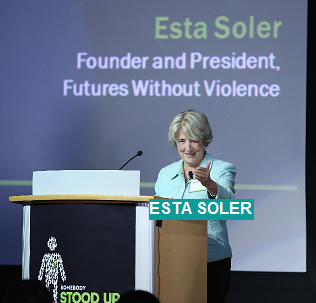 Event organizer Esta Soler, Founder and President of Futures Without Violence, introduced the necessity of a national pubic education campaign to raise visibility on childhood trauma in the year ahead, and thanked the Summit sponsors, The California Endowment and the Blue Shield of California Foundation.
Event organizer Esta Soler, Founder and President of Futures Without Violence, introduced the necessity of a national pubic education campaign to raise visibility on childhood trauma in the year ahead, and thanked the Summit sponsors, The California Endowment and the Blue Shield of California Foundation.
Visit www.somebodystoodup.squarespace.com to learn more about the event agenda and speakers. Read the hashtag #SomebodyStoodUp to see the event’s Twitter activity. To learn about Futures Without Violence, visitstage.futureswithoutviolence.org
###
